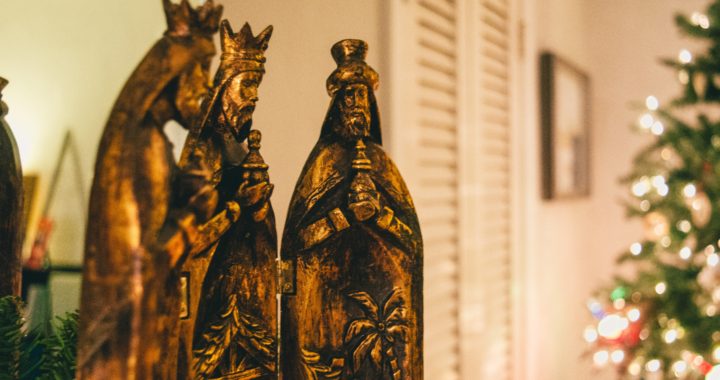What are the four things mandatory for promotion by God? A testimony from Farming God’s Way
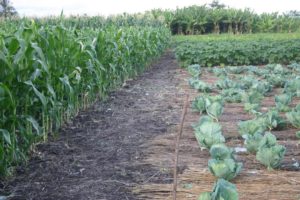
“For promotion cometh neither from the east, nor from the west, nor from the south. But God is the judge: He putteth down one, and setteth up another.” (Psalm 75:6-7 KJV)
In this life we find that there are often grave inequalities. So many people today are looking for human promotion, that is, to bask in the approval of others. But, is there another way? Instead of relying on others, the Bible tells us that there are four characteristics that are critical for a Christian believer to experience God’s blessings and promotion in their life. What are they?
Once Jesus has first place in your life, the first characteristic that is necessary is FAITHFULNESS. A faithful person is dependable and will do what must be done with all his heart and with enthusiasm. “He who is faithful in a very little thing is faithful also in much….” (Luke 16:10). Likewise, faithfulness over what belongs to another, gives God the opportunity to give us “our own.” “And if you have not been faithful in the use of that which is another’s, who will give you that which is your own?” (Luke 16:12)
A second characteristic is a SERVANT’S HEART. He who is willing to do whatever tasks needs to be done, never considering anything to be too menial. One can never lead others until he has first acquired a servant’s heart. “Have this attitude in yourselves which was also in Christ Jesus, who although He existed in the form of God, did not regard equality with God a thing to be grasped, but emptied Himself, taking the form of a bond-servant….” (Philippians 2:5-7)
A Christian believer must SUBMIT TO AUTHORITY. Unless one can submit to authority placed over him by God, he will never be in the position of authority himself. Authority represents God. To rebel against God is to give up our power and authority over Satan. To rebel against those in authority over us is to rebel against God. “Submit therefore to God. Resist the devil, and he will flee from you.” (James 4:7)
A fourth critical attribute is THANKFULNESS or GRATITUDE and is a key to prosperity, promotion and exaltation. “Godliness is a means of great gain when accompanied by contentment.” (1st Timothy 6:6) The Bible encourages us to cultivate a spirit of gratitude towards God and to “show yourselves thankful” but not just on occasion, but from having a grateful disposition or attitude on a continual basis. As 1st Thessalonians 5:18 imparts, “in everything give thanks; for this is God’s will for you in Christ Jesus.” A natural byproduct of GRATITUDE is generosity. “A generous person will prosper; whoever refreshes others will be refreshed.” (Proverbs 11:25)
Of all the continents of the world, Africa is the most poverty stricken with approximately 750 million subsistence farmers who live undernourished and degraded lives due to poor crop yields. In recent decades hundreds of billions of dollars have poured into Africa every year and yet the poor are getting poorer
“My people perish because of a lack of knowledge.” (Hosea 4:6)
Farming God’s Way is a patented process of remarkable agricultural techniques that were developed on a commercial farm in Zimbabwe in the 1980s that teaches four Bible-based principles that greatly enhance crop yields (see December 18, 2018 blog post). At Sons of Thunder Farm in Zambia, these proven non-till agricultural techniques have been adopted with great success. In addition, SOT Farm Manager Alexander Mubanga is now a National Trainer for the Farming God’s Way organization and the Sons of Thunder Farm is now one of its regional training centers.

This season has been a marvelous testimony not only to the consistency and soundness of Farming God’s Way techniques but also bears witness to how God has blessed and promoted Sons of Thunder in Zambia as He continues to minister through this ministry. There has been an awful drought that has impacted most of Southern Africa including much of southern Zambia in the last year. And yet the Lord blessed Sons of Thunder this season with timely rains and a bountiful harvest of an expanding list of crops. It was as if Sons of Thunder Farm was an oasis within a parched land. Our praise is all to Him!
And it is with a generous heart that Sons of Thunder has shared and delivered food with our surrounding neighbors who have suffered under this drought. All the more now they are interested in learning from us the Farming God’s Way techniques!
The gospel of Jesus Christ is part of the first training session of Farming God’s Way. Sin brought a curse not only on the people but the land. Jesus’ death on the cross broke that curse and FGW adherents pray not only for their personal redemption but that their land would be freed from the curse as well. It is all part of submitting to the authority of God.
Doing everything on time, setting high standards and minimizing waste is all part of the faithfulness required within the Farming God’s Way discipline and to employ a servant’s heart.
And one of its major principles is to “do everything with joy and gladness of heart.” Within this discipline, Farming God’s Way is redemptive and it is also evangelical. At Sons of Thunder we use Farming God’s Way agricultural training and education as a means to go into all the world.
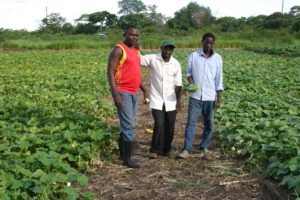 Within these photos you can see how God has blessed Sons of Thunder with bountiful and healthy crops of maize, bananas, beans, cucumbers, cabbage, butternut squash, okra, tomatoes, lemons, limes, carrots, eggplant, lettuce, onions and bell peppers. In addition, He is continuing to use and promote Sons of Thunder to spread the gospel of Jesus Christ and teach neighboring Zambians how to use Farming God’s Way techniques. We are very grateful for the many prayers that lifted up Sons of Thunder!
Within these photos you can see how God has blessed Sons of Thunder with bountiful and healthy crops of maize, bananas, beans, cucumbers, cabbage, butternut squash, okra, tomatoes, lemons, limes, carrots, eggplant, lettuce, onions and bell peppers. In addition, He is continuing to use and promote Sons of Thunder to spread the gospel of Jesus Christ and teach neighboring Zambians how to use Farming God’s Way techniques. We are very grateful for the many prayers that lifted up Sons of Thunder!
“You will have plenty to eat and be satisfied and praise the name of the Lord your God,
Who has dealt wondrously with you; Then My people will never be put to shame.” (Joel 2:26)
So many of our Christian friends today tell us that they are examining the reports of evangelical missions all the more for reasons of accountability and which is understandable. If there is one aspect of supporting Sons of Thunder that I would emphasize is that you can be assured that you when you support our ministry you are surely enjoining our Lord in a very direct and active work that is transforming thousands of lives in southern Africa. God is surely stirring hearts allover the world and we are committed to taking full advantage of these open doors, and which is why your financial support and your prayers are so vitally needed now. Will you help us?
We are deeply grateful for your prayers and gifts–we could not carry out this work without you. Thank you for all you do in serving Christ and His Kingdom.
Sources: Dusty Kemp, Patrick Cairns, Jerry Beall
Seven Parables and Seven Letters to the Churches

Jesus introduces a remarkable set of seven parables in Matthew 13 that are quite unique in their application and portent. What is more remarkable is that these seven parables in their listed order would correlate perfectly to the seven letters to the churches found in Revelation 2-3 that the Apostle John would receive years later.
These seven parables regarding the mysteries of the kingdom of heaven are for a specific period of time. The key to understanding them is that these seven parables represent the age in between the two advents of Jesus Christ. They describe the spiritual conditions, both past and present, during the church age, or more commonly, the “Age of Grace.” They include parables such as the sower, the wheat and the tares, the mustard seed and the dragnet.
“He answered and said unto them, Because it is given unto you to know the mysteries of the kingdom of heaven, but to them it is not given…Therefore, speak I to them in parables; because they seeing see not; and hearing they hear not, neither do they understand….But blessed are your eyes, for they see; and your ears for they hear.” (Matthew 13:11,13,16)
Just as the book of Acts provides a history of the earliest years of the church age, Revelation 2 and 3 provides a preview of its future, that is an overview of the entire church age. But the letters found in Revelation are also prophetic and bring closure to the church age. If the seven parables and/or the seven letters to the churches were in any other order it would not make sense. They are in a precise order for a reason. Although we cannot discuss the paring of each one, here is their listing:
| Parable of the Sower | Ephesus | |
| Wheat and Tares | Smyrna | |
| Mustard Seed | Pergamos | |
| Leaven | Thyatira | |
| Hidden Treasure | Sardis | |
| Pearl of great price | Philadelphia | |
| Dragnet | Laodicea |
“The seven stars are the angels of the seven churches: and the seven candlesticks which thou sawest are the seven churches.” (Revelation 1:20b)
As an example, the parable of the mustard seed, which is the smallest of seeds for garden plants and herbs. Although it is such a small seed it can grow into being one of the larger garden plants. Jesus even uses the mustard seed as a basis to describe a person’s faith in Matthew 17. But in this parable, there is a lesson of humility. Why? Because the parable describes a mustard seed that grows into a large tree enabling birds to nest in its branches. Have you ever seen a mustard tree? Of course not. Because a mustard plant was never intended to grow into a large tree. Not only could it bear no fruit, but it would be a monstrosity. Who were the birds? According to the earlier parable of the sower, the birds represent Satan’s minions.
Likewise, this third parable from Matthew 13 aligns directly with the third letter to the church at Pergamos in Revelation 2 which governs the general period of 300 A.D. to 600 A.D. It was during this time that the Roman emperor Constantine declared Christianity to be the state religion of the Roman Empire. You might view that as a positive moment, but was it? Unfortunately, when this occurred thousands of pagan priests became Christian priests almost overnight. As a result, there were many pagan practices and other Gnostic teachings that were codified and co-opted into the Church. The Church was never intended to be a government entity. It was designed to be a body of believers based on the choice of their free will. “Jesus answered, ‘My kingdom is not of this world…” (John 18:36a)
Today we cannot help but acknowledge that we are now in the Laodicean age. It is the seventh and final church age that is the “lukewarm” church. Unlike the first six churches, this church is not named precisely but Jesus describes it in Revelation 3:14 as “the church of the Laodiceans” as if the people exercised some claim on the church. In effect, it has come under the influence of the outside world and its values. It is “neither cold nor hot” and seemingly accepts any doctrine for the sake of compromise as it denies the verbal and literal interpretation of Scripture. This church believes it is rich and “in need of nothing” but the Lord says it is “wretched, and miserable, and poor, and blind, and naked.”
In one of the most scathing remarks found in the letters to the churches, Jesus says in Revelation 3:20, “Behold, I stand at the door, and knock: if any man hear my voice, and open the door, I will come in to him, and will sup with him, and he with me.” Used so frequently on other occasions to prompt a non-believer to ask the Lord for their salvation, in this final letter to Laodicea it suggests that the Lord sees Himself OUTSIDE the doors of the church and desires to be INSIDE the church, if only the congregants would invite Him in.
Today, the Church has lost much of its identity as a transforming agent by allowing the influence of the world’s values to come inside. Once the Church stood strong on so many social and moral issues but today is frequently seen bowing to secular pressures. And finally, today the Church is losing its grip on the assured Word of God in its preaching and teaching. We live in a time when academic scholarship has seriously attacked the integrity of the Biblical text. No generation in history has been more skeptical of the notion that the Bible is nothing more than a construct of folklore and traditions. Biblical illiteracy is rampant in today’s churches.
Certainly not all churches today are Laodicean, and there are many churches alive and well that might better resemble the more desirable attributes of the church at Philadelphia (Revelation 3:7-13). And our brothers and sisters in China, Iran, Egypt and North Korea might surely identify more with the persecuted church of Smyrna (Revelation 3:8-11). But the reality of this Laodicean age remains as a general condition.
The seventh and final parable from Matthew 13 that applies to Laodicea is the parable of the dragnet. It describes a harvest whereby a net is cast into the sea and drawn ashore with the net full of fish that will be sorted. The “good fish” will be kept and the “bad fish” thrown away. It is a picture of an impending and final judgement that requires no further analysis. “He that has an ear, let him hear…”
“..that ye might be filled with the knowledge of his will in all wisdom and spiritual understanding: That ye might walk worthy of the Lord unto all pleasing, being fruitful in every good work, and increasing in the knowledge of God; strengthened with all might, according to his glorious power, unto all patience and longsuffering with joyfulness.” (Colossians 1:9b-11)
Why did Jesus go to Caesarea Philippi?
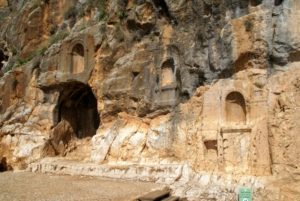
Just as Jesus Christ perfectly punctuated the Levitical spring feasts at His crucifixion, likewise His words, deeds, and movements also had deliberate purpose. Our God is a God of order, Jesus did not wander aimlessly or randomly. As such, there is a predeterminate understanding as to why He approached Caesarea Philippi that has additional spiritual meaning. What happened at Caesarea Philippi?
The Son of God appeared for this purpose, to destroy the works of the devil. (1st John 3:8)
Lying north of the Galilee region and at the southwestern base of Mount Hermon, Caesarea Philippi was formerly known as “Paneas” until Herod the Great’s son Philip renamed it in honor of Caesar. Today, as seen in the photo above, it is known as Banias and it contains the site once sacred to the Greek goat god Pan known as the “Grotto of Pan” or “cave of Pan” wherein human sacrifices were performed. Inside the grotto (cave) and etched in the walls was a Greek sign that said, “gates of Hades.” It is important to note, that during the time of Christ, Caesarea Philippi was recognized commonly throughout Israel to be the location of the literal “gates of hell.”
Appropriately, and thus it was here that Jesus asked, “who do you say that I am?” Simon Peter confessed Him to be the Christ, the Son of the living God. “And Jesus answered and said unto him, blessed are thou, Simon Barjonah: for flesh and blood hath not revealed it unto thee, but my Father which is in heaven. And I say also unto thee, That thou art Peter, and upon this rock I will build my church,” and the gates of hell shall not prevail against it.” (Matthew 16:17-18 KJV)
Jesus was making a statement that extended far beyond His audience of disciples, He was making a statement in the spiritual realm and to Satan and his demoniac. In the next verse He promises to empower the Church by His authority: And I will give unto thee the keys of the kingdom of heaven: and whatsoever thou shalt bind on earth shall be bound in heaven: and whosoever thou shall loose on earth shall be loosed in heaven.” (verse 19)
It is no coincidence that the very next event that occurred in the gospel accounts was the Mount of Transfiguration whereby after declaring Himself to be the Christ, Jesus was seen in His glory by Peter, James and John demonstrating further evidence that He was the divine Son of God. The voice of God which the disciples heard, gave further confirmation of the calling and Sonship of Jesus. And where did this even take place?
Rising right above Caesarea Philippi is Mount Hermon at a height of 9,200 feet. Matthew 17:1 says that Jesus took Peter, James and John up a “high mountain.” Although some believe that Mount Tabor was the site of His Transfiguration, it is only 1,900 feet in altitude and has never been described as a “high mountain.” Most theologians believe the site of this event to be Mount Hermon but the Bible does not tell us precisely. Is there an additional connotation possibly attached to Mount Hermon?
Mount Hermon was known as a “holy mountain” to the ancient Canaanites. It was known to them as the holy mountain of “El” the Canaanite god. According to them, El held court on Mount Hermon with his consort Asherah and the “seventy sons of El.” Although “El” was a name that was used in the Hebrew to describe Yahweh (Elohim, El Shaddai, El Elyon, etc.) the “El” of the Canaanites was in no way Yahweh, the God of Israel. The god El of Canaan was in fact a figure head, the real power wielded by their “king of gods” known as Ba’al.
According the apocryphal books of Enoch and Jubilees, another heinous event occurred long ago on Mount Hermon. Although these books are not considered to be canon, it is noted that Jesus quoted from the book of Enoch on several occasions. Today they are to be read more for historical reference and context. It was on Mount Hermon that Enoch and Jubilees state that the fallen angels of Genesis 6 began procreating with human women producing the “Nephilim” (‘bene Elohim’ in Hebrew) or giants that wrought destruction on God’s creation and who ultimately perished in Noah’s Flood. According to Peter (2nd Peter 2:4) and Jude (1:6) these fallen angels await judgment in chains.
It is believed that it was here that the Lord was transfigured and “his face did shine as the sun, and his raiment was white as the light.” (Matthew 17:1) Not only was the Transfiguration an undeniable demonstration of Jesus as the Son of God but, assuming Mount Hermon was indeed the location, the event would have signaled to the powers of evil moreover that His kingdom and authority would triumph, serving notice on the very site where great evil had occurred before.
Although it is only given in Luke’s account, after the Mount of Transfiguration we read in the next chapter (Luke 10) how Jesus sent out 70 disciples into the countryside in teams of two to heal the sick, drive out demons and proclaim that “the kingdom is near.” Upon their return and with reports of great excitement they said to Jesus, “even the devils (demons) are subject unto us through thy name.” (Luke 10:17) The “sending out of the 70” is an example and demonstration of what the Church was to employ as one of its primary missions: to destroy the works of the devil under the authority of Jesus Christ.
“As the Father has sent me, so I send you.” (John 20:21)
“And having disarmed the power and authorities, he made a public spectacle of them, triumphing over them by the cross.” (Colossians 2:15) It is the decisive victory of Jesus on the cross that usurps the authority of the kingdom of darkness.
“He replied, “I saw Satan fall like lightning from heaven. I have given you authority to trample on snakes and scorpions and to overcome all the power of the enemy; nothing will harm you. However, do not rejoice that the spirits submit to you, but rejoice that your names are written in heaven.” (Luke 10:18-20)
The Live(s) of Elijah. And who were the “two olive trees?”
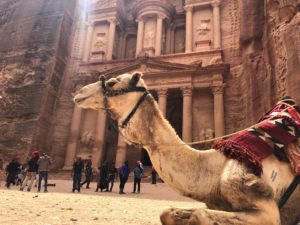
In the 4th chapter of Zechariah, the prophet had a vision in which he saw a golden lamp stand with seven lamps upon it and two olive trees standing by, feeding it continually with oil. This vision takes us back to the days of Zechariah when Zerubbabel had laid the foundation of the Temple and the message from God was to finish the job. The prophet then with great interest turns to the two olive trees and asks what (or who) they are.
“And I answered again, and said unto him, What be these two olive branches which through the two golden pipes empty the golden oil out of themselves? And he answered me and said, Knowest thou not what these be? And I said, No, my lord. Then said he, These are the two anointed ones, that stand by the Lord of the whole earth.” (Zechariah 4:12-14 KJV)
They are called the “two witnesses” in Revelation 11, represented by most theologians to be Moses and Elijah throughout the pages of the Bible. Even though in this passage they are not named, it is obvious that they represent Moses (on behalf of the law) and Elijah (on behalf of the prophets). In Revelation 11:4 the Bible tells us that these two witnesses correspond to the two olive trees spoken of by Zechariah. One has “power to shut up heaven, that it rain not in the days of their prophecy,” and the other has “power over waters to turn them to blood.” These are the precise characteristics of both Moses and Elijah. Do we see them elsewhere in the Bible?
We do. What is ever more interesting, is that we see Elijah again in the New Testament as well as a brief appearance by Moses.
The personal history of Elijah is somewhat clouded and the Bible does not tell us much about him. After King Ahab’s death, Elijah appeared before his son Ahaziah who had succeeded his father as king. Take note of his appearance:
“And he said unto them, What manner of man was he which came up to meet you, and told you these words? And they answered him, He was an hairy man, and girt with a girdle of leather about his loins, And he said, It is Elijah the Tishbite.” (2nd Kings 1:7,8 KJV)
Elijah appeared to be a man of sparse needs and simple tastes, dedicated to the Lord. It is interesting to note going forward in time that this is a very similar description of John the Baptist:
“In those days came John the Baptist, preaching in the wilderness of Judaea, And saying, Repent ye: for the kingdom of heaven is at hand. For this is he that was spoke of by the prophet Esaias (Isaiah), saying, The voice of one crying in the wilderness, Prepare ye the way of the Lord, make his path straight. And the same John had his raiment of camel’s hair, and a leathern girdle about his loins; and his meat was locusts and wild honey. Then went out to him Jerusalem, and all Judaea, and all the region round about Jordan, And were baptized of him in Jordan, confessing their sins.” (Matthew 3:1-6)
John traveled down the Jordan River, just the same territory as Elijah had, dressed in simple garb and eating only the necessary foods to keep him alive.
John the Baptist was later imprisoned for his criticism of Herod Antipas’s incestuous relationship with the woman called Herodias, pronouncing their union to be unlawful. For this, and at the whim of his daughter, he was beheaded.
Not very long after his death, Peter, James and John accompanied the Lord to a mountain top (believed to be Mount Hermon) where they saw Jesus in His glory. It is known as the Mount of Transfiguration. To the astonishment of the disciples, both Elijah and Moses appeared with Jesus in this moment and began to speak with Him. Jesus then explained the amazing event to them coming down:
“And as they came down from the mountain, Jesus charged them, saying, Tell the vision to no man, until the Son of man be risen again from the dead. And his disciples asked him, saying, Why then say the scribes that Elias (Elijah) must first come? And Jesus answered and said unto them, Elias truly shall first come, and restore all things. But I say unto you, that Elias (Elijah) is come already, and they knew him not, but have done unto him whatsoever they listed. Likewise, shall also the Son of man suffer of them. Then the disciples understood that he spake unto them of John the Baptist.” (Matthew 17:9-13)
What did Jesus mean by this? Without trying to examine Jesus’ words in depth, here is the New Testament order of events:
John the Baptist came as the Lord’s messenger, to announce the arrival of Messiah. He baptized Jesus. He was arrested, then killed. Next, the disciples experienced the presence of Moses and Elijah at the Transfiguration. In taking Jesus words literally, Elijah came in the person of John, then after John’s death, he appeared unto the disciples as himself. Jesus restates this also in Matthew 11:12-14.
Zechariah, Haggai, and Malachi were all contemporaries and wrote their final prophecies in the Old Testament. Then there were no more prophets for 400 years until the birth of Christ. But the source of the disciples’ questions of Jesus about the coming of Elijah are found in Malachi’s final verses. Malachi refers to both Moses and Elijah whom he states will prepare the remnant of his people for the Day of the Lord:
“Remember ye the law of Moses my servant, which I commanded unto him in Horeb for all Israel, with the statutes and judgments.
Behold, I will send you Elijah the prophet before the coming of the great and dreadful day of the Lord;
And he shall turn the heart of the fathers to the children, and the heart of the children to the fathers, lest I come and smite the earth with a curse.” (Malachi 4:4-6)
When John the Baptist came in the spirit and power of Elijah, his ministry was cut short. He was not allowed to turn the “heart of the children to their fathers” nor did he usher in the Kingdom Age. Therefore, the Lord followed through on His threat and smote the earth with a curse driving the Jewish people out of the Land for almost 1,900 years before Israel was reborn in 1948.
But when Elijah appears the next time as one of the two witnesses found in Revelation 11, he will succeed in helping bring revival to the nation of Israel. And Jesus will not curse the earth at that time, instead He will establish His glorious Kingdom and rule for a thousand years, otherwise known as the Millennial Reign of Jesus Christ.
“Behold, children are a gift of the Lord, the fruit of the womb is a reward.” (Psalm 127:3)

In the African bush it is not uncommon at the birth of a child that the mother calls in the local village witch doctor or shaman to perform a prayer of dedication over the infant. He would typically wrap the child in a garland or strand of beads and pearls and dedicate the child to some voodoo god, which we know to be of the devil. Several years ago, the Jessica’s Hope Maternity Ward was opened at the Sons of Thunder Farm in Zambia with modern equipment to offer a new alternative. Today, local expectant mothers know that they can go to the maternity center and both mother and baby will receive premium care and services. Now we are cutting out the shaman altogether and babies are being dedicated to the Lord Jesus Christ.
“Vindicate the weak and fatherless; Do justice to the afflicted and destitute. Rescue the weak and needy; Deliver them out of the hand of the wicked.” (Psalm 82:3-4)
In so many ways, Sons of Thunder is coming to adopt attributes of an “incubator” or spiritual, economic and agricultural growth in southern Zambia. At God’s direction we are spreading the gospel and building the Church, raising the standard of living, teaching life-changing agricultural methods, fueling a micro business community and our school is seeding the future labor pool of tomorrow’s Zambia.
The Sons of Thunder medical ministry has also played a tremendous role in transforming lives.
As part of the medical ministry, this past year almost 500 babies were delivered through the maternity center or somewhere in transit, 405 at Jessica’s Hope Maternity Center and 79 in the field. Of those 484 deliveries, 61 were HIV positive mothers that are always followed up with medications and prophylaxis treatments. There were no maternal deaths and no orphans. As of the end of January, 42 babies have been delivered in 2019, 35 in the Maternity Center and 7 outside.
The Sons of Thunder Medical Clinic treats an average of 1,800 patients each month, including our regularly scheduled medical outreach program at five different locations off the Farm. Our medical budget continues to grow and the need for more medicines, medical supplies and equipment is great. The SOT medical ministry provides medical, prenatal and maternity services at no cost to our patients and has helped dramatically reduce the mortality rate in southern Zambia. More importantly, God has enabled this ministry to share the love of Jesus Christ with those in need of medical care.
Back in September I wrote about our critical need to bridge the gap in compensation to our medical personnel. Both Sal and Renee Marini are our self-sustaining medical missionaries, but our budget is being challenged to pay our locally trained and highly skilled medical staff the fair market compensation they might obtain elsewhere. We are concerned that if we are not able to bridge this gap soon that we may begin to lose some of the vital personnel of this medical team to other opportunities.
“…for it is God who is at work in you, both to will and to work for His good pleasure.” (Philippians 2:13)
Today, we are asking for your help. Our goal is to continue to deliver exceptional medical and maternity services to the many thousands of Zambians who have access to Sons of Thunder. We treated over 22,000 patients last year and our desire is to continue to deliver outstanding medical services while exalting the Lord Jesus Christ in the treatment of every patient.
That’s why our goal for this campaign is to raise an additional $100,000 by March 31. If we raise that amount, we will not only meet the medical budget for medicines, medical supplies and equipment but also bridge this critical gap for our medical personnel and which will assuage pressures on the SOT budget for the duration of 2019.
Would you be willing to make a special donation of $50, $100 or whatever you can afford to help us bridge this gap?
You can make an online donation by pressing the “Contribute” button on the menu above using PayPal.
Or you can simply make a check payable to “Sons of Thunder Ministries” and mail to:
Sons of Thunder Ministries
P.O. Box 7
Damascus, MD 20872
Sons of Thunder Ministries is a fully organized 501(c)3 non-profit organization operating in the state of Maryland.
We simply can’t do this without you. Your support will make a real, lasting impact in the lives of those who are not only in need of medical treatment but more importantly, the love of Jesus Christ whom we share generously.
Undeniable
 It is one of the most controversial and often debated portions of Scripture. In fact, the Jewish Talmud forbids Jews from reading this passage and attempting to calculate the dates of this chapter. (Talmud Sanhedrin 97b). Why? What is trying to be concealed? It is one of the most amazing chapters in the Bible, for in these verses we are told when Messiah would come. Incredibly, even the archangel Gabriel is dispatched to lend understanding to the author of its meaning.
It is one of the most controversial and often debated portions of Scripture. In fact, the Jewish Talmud forbids Jews from reading this passage and attempting to calculate the dates of this chapter. (Talmud Sanhedrin 97b). Why? What is trying to be concealed? It is one of the most amazing chapters in the Bible, for in these verses we are told when Messiah would come. Incredibly, even the archangel Gabriel is dispatched to lend understanding to the author of its meaning.
In 538 B.C. and being mindful of Jeremiah’s prophecy (Jeremiah 25:11) regarding the 70 years of captivity that Israel experienced during the Babylonian Captivity, Daniel began to pray and intercede for his people, inquiring of the Lord the future of Israel. He received one of the most amazing visions ever given to a man, the vision of Seventy Weeks of Years foretold to the precise day when Israel would reject and “cut off” their Messiah, and then look forward to the distant future and Israel’s final “week of years.”
“24 Seventy weeks are determined upon thy people and upon thy holy city, to finish the transgression, and to make an end of sins, and to make reconciliation for iniquity, and to bring in everlasting righteousness, and to seal up the vision and prophecy, and to anoint the most Holy.
25 Know therefore and understand, that from the going forth of the commandment to restore and to build Jerusalem unto the Messiah the Prince shall be seven weeks, and threescore and two weeks: the street shall be built again, and the wall, even in troublous times.
26 And after threescore and two weeks shall Messiah be cut off, but not for himself: and the people of the prince that shall come shall destroy the city and the sanctuary; and the end thereof shall be with a flood, and unto the end of the war desolations are determined.
27 And he shall confirm the covenant with many for one week: and in the midst of the week he shall cause the sacrifice and the oblation to cease, and for the overspreading of abominations he shall make it desolate, even until the consummation, and that determined shall be poured upon the desolate.” (Daniel 9:24-27 KJV)
“From the going forth…sixty-two weeks (threescore and two weeks)” was fulfilled to the exact day 483 biblical years after it commenced.
How does one calculate this? First, if we want to understand precise times in the fulfillment of prophecy, we still need to use the same biblical lunar-solar year of 360 days which the prophets themselves used.
The commandment to rebuild “the walls of Jerusalem” was fulfilled by King Artaxerxes Longimanus of Persia on March 14, 445 B.C.
“In the month of Nisan, in the twentieth year of King Artaxerxes….” (Nehemiah 2:1)
According to the ancient Talmud, “The first day of the month Nisan is the New Year for the computation of the reign of kings and for festivals.”
The Royal Observatory, Greenwich, UK, states that the first of Nisan in King Artaxerxes 20th year was March 14, 445 B.C.
“from the commandment to restore and to build Jerusalem”– seven “weeks” (7X7= 49 years) and sixty–two “weeks” (62X7= 434 years). 49+434= 483 biblical years or 173,880 days (483×360= 173,880).
At the end of 69 “weeks”, according to Daniel, “Messiah will be cut off.”
From March 14, 445 B.C. (1st of Nisan) to April 6, 32 A.D. (10th of Nisan) is 173,880 days.
To arrive at this from a solar calendar year perspective, use a calculator. From March 14, 445 B.C. to March 14, 32 A.D. is 476 years of 365 days each or 173,740 days. Add 24 days from March 14 to April 6. Then add 116 leap days that occurred. (173,740+24+116= 173,880 days).
April 6, 32 A.D. just happened to be the Tenth of Nisan, or Palm Sunday. It was the same day that all Jewish families selected an unblemished lamb to care for the next four days until it was slaughtered to be their Passover lamb. And it was the only day that Jesus allowed Himself to be worshiped as Messiah. It was on that day that he rode into Jerusalem on the back of a foal and his disciples recognized Him as the Messiah, proclaiming, “Blessed be the King that cometh in the name of the Lord: peace in heaven, and glory in the highest.” (Luke 19:38) But the Pharisees and most of the people refused to acknowledge Him as Messiah. The called out to Jesus, “Master, rebuke thy disciples.” (verse 39)
But Jesus replied to the Pharisees that “if these should hold their peace, the stones would immediately cry out.” Then Luke describes the scene as Jesus approached Jerusalem, “he beheld the city, and wept over it, Saying, If thou hadst known, even thou, at least in this thy day, the things which belong unto thy peace! but now they are hid from thine eyes. For the days shall come upon thee, that thine enemies shall cast a trench about thee, and compass thee round, and keep thee in on every side, And shall lay thee even with the ground, and thy children within thee; and they shall not leave in thee one stone upon another; because thou knewest not the time of thy visitation.” (Luke 19:41-44)
As our Passover Lamb, Jesus was crucified four days later. As He hung on the cross, the Bible tells us the sun became darkened from 12 noon until 3pm. This celestial event was even recorded in Rome, Athens, Syria and Carthage, Egypt as shared by historians Thallus, Phlegon, Tertullian, and Julius Africanus. It was not just a ‘solar eclipse.” A solar eclipse can last only a maximum of 7 minutes. This event lasted three hours and the land so darkened that Phlegon said one could see all the constellations of the stars as if it were night.
This is just a portion of the “evidence.” When one considers the full record of all the evidence it is obvious that the birth, life, death, resurrection and ascension of our Lord Jesus Christ is simply undeniable.
Jesus had earlier chastised the Pharisees for being able to recognize the seasons but not recognizing the time of “thy visitation.” (Luke 12:56; Matthew 16:3)
Consider it. Do you recognize the season you live?
Sources: Sir Robert Anderson, Grant Jeffrey, Phlegon, Thallus, Tertullian, Julius Africanus, Dr. John Walvoord, Daniel Anderson
We are grateful!
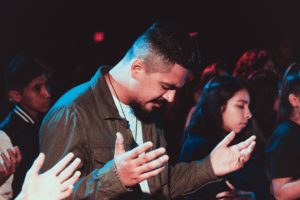
“When David Livingstone returned to his native Scotland after sixteen difficult years as a missionary and explorer in Africa, his body was emaciated by the ravages of some twenty-seven fevers that had coursed through his veins during the years of his service. His left arm hung useless at his side, the result of his being mangled by a lion.
Speaking to the students at Glasgow University, he said, ‘Shall I tell you what sustained me during the hardship and loneliness of my exile? It was Christ’s promise, ‘Lo, I am with you always, even to the end of the age.’”
A little over a year ago Sons of Thunder made known a number of challenges and needs that were necessary to fulfill the work of the ministry in Zambia. Specifically, we asked for financial help for the medical ministry in supplying the needs of our dedicated and “home-grown” medical personnel who play such a vital role in ministering to Zambians every day. Not only did we need to provide ample and better housing for them but we had a financial gap limiting our ability to compensate them fairly. Additionally, Sons of Thunder was in need for overland vehicles to replace other aging SUVs that had succumbed to the relentless wear and tear they are subjected in the African bush. Reliable transportation is absolutely critical in southern Africa for many different reasons.
“And God is able to make all grace abound toward you; that ye, always having all sufficiency in all things, may abound to every good work:” (2nd Corinthians 9:8)
Since purchasing the farm in 1996 near Livingstone (named after David Livingstone), Sons of Thunder has time and again experienced God raising up people to serve and minister in extraordinary ways, opening up new opportunities to proclaim the gospel of our Lord Jesus Christ, and His making provision for the various ministry needs that arise.
A little over a year ago monies came forth from a ministry source that enabled SOT to purchase a badly needed Toyota Hilux pickup truck to replace a Land Rover beyond repair. The utility of this vehicle has already proven itself in the last year.
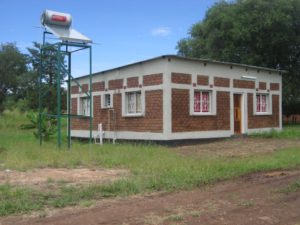 Last spring, a Colorado family vacationing in southern Africa was introduced to Sons of Thunder in a chance conversation while on safari in Botswana. Compelled by the story, they visited the Sons of Thunder Farm the next day and enjoyed a complete tour by Alexander, our farm manager. Later, founder Jerry Beall shared the history of Sons of Thunder and answered questions about ministry needs.
Last spring, a Colorado family vacationing in southern Africa was introduced to Sons of Thunder in a chance conversation while on safari in Botswana. Compelled by the story, they visited the Sons of Thunder Farm the next day and enjoyed a complete tour by Alexander, our farm manager. Later, founder Jerry Beall shared the history of Sons of Thunder and answered questions about ministry needs.
Upon their return to the U.S. and at the Lord’s prompting, their donations funded the complete construction of a much-needed second medical housing unit that is now home for two highly trained and registered female nurses near the Sons of Thunder Medical Clinic. This was a tremendous blessing for the medical ministry.
And just a couple of months ago another friend to the Sons of Thunder ministry answered a call read in the SOT monthly newsletter for a new SUV and donated monies enabling the purchase of a Toyota 4WD truck that seats up to twelve with a heavy duty grill guard and roof rack with ladder that is perfectly suited for transporting medical supplies. The vehicle also enables the bedding of a patient in the back and is perfect for making medical calls in the bush.
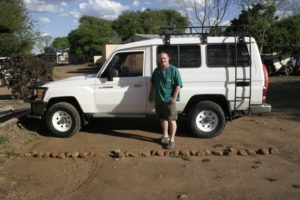 We are most thankful to the Lord for how He meets us in these critical needs and how He moves on people like you to make all things possible. Through the working of the Holy Spirit, Sons of Thunder has made a dynamic impact on thousands of lives in southwestern Zambia and beyond. In this last year, it is your continued support that sustains the four churches, the medical ministry, the maternity ward, our state-certified school with 400 students, a small-business micro community, and the life-changing agricultural ministry led by Farming God’s Way, a patented non-till agricultural technique that is saving lives.
We are most thankful to the Lord for how He meets us in these critical needs and how He moves on people like you to make all things possible. Through the working of the Holy Spirit, Sons of Thunder has made a dynamic impact on thousands of lives in southwestern Zambia and beyond. In this last year, it is your continued support that sustains the four churches, the medical ministry, the maternity ward, our state-certified school with 400 students, a small-business micro community, and the life-changing agricultural ministry led by Farming God’s Way, a patented non-till agricultural technique that is saving lives.
As the new year unfolds, Sons of Thunder has numerous opportunities identified accompanied with their own set of challenges. And we are still seeking to solve the revenue gap for our medical team’s compensation in line with Zambian salary expectations. Would you be willing to support us?
For more information about Sons of Thunder Ministries you can view the You Tube video found below and/or explore our website at: www.sotministry.org.
I would welcome any inquiries you may have about Sons of Thunder Ministries and can be contacted at info4acarpentersview@gmail.com.
Thank you again for your generous support. Together, we continue to exalt the Lord Jesus Christ and the Gospel of Salvation.
Ron
Excerpt: Billy Graham, Hope for Each Day
Joseph and Mary went to Bethlehem to be “taxed.” But, what was the real reason?

Based on the number of comments received on the last post regarding the story of the Magi, there is another aspect relating to the birth of Christ that should be shared and that is corroborated by the Biblical account and historical documentation. Why did Joseph and Mary go to Bethlehem?
In the half century before the birth of our Savior, there was much political infighting and disarray within the Roman republic. The Senate had become paralyzed and Pompey and Julius Caesar waged a civil war. After Pompey was assassinated in Egypt, Julius Caesar was the unquestioned emperor until he too was murdered by members of the Senate in 44 B.C. He was succeeded by his 19-year old adopted son Octavius Caesar who rose to political and military glory under the acclaimed title “Caesar Augustus” while efficiently consolidating his power. Within the Roman Empire he was exalted as a god.
At the same time his close confederate and political appointee Herod the Great controlled Jerusalem and the land of Israel. Augustus and Herod were friends and companions since their youth and their friendship was maintained as they fulfilled their adult roles. Herod even sent his sons to Rome to be schooled. But as the fortunes of Augustus increased, in contrast Herod encountered increasing domestic troubles in Israel. Within Judaism, there was increasing speculation that a promised Messiah, a “King of the Jews,” was prophesied to be born and this news circulated from Jerusalem to Rome.
It was a time of heartless brutality. The dark power of Caesar Augustus and Herod the Great held Israel in harsh political and superstitious bondage and any potential pretenders to the throne were quickly eliminated to ensure their longevity. Meanwhile, in order to retain his political and military power, Augustus commanded that the entire Roman Empire be scrutinized by a massive census. It was within the context of this backdrop that our Lord came to be born on this planet. Enter the Biblical account:
“And it came to pass in those days, that there went out a decree from Caesar Augustus, that all the world should be taxed. (And this taxing was first made when Cyrenius was governor of Syria). And all went to be taxed, every one into his own city. And Joseph also went up from Galilee, out of the city of Nazareth, into Judaea, unto the city of David, which is called Bethlehem: (because he was of the house and lineage of David:) To be taxed with Mary his espoused wife, being great with child.” (Luke 2:1-5)
Why had Joseph and Mary come all this way from Nazareth when she was in the late stages of pregnancy? Because it was decreed by Roman bureaucrats. Both Joseph and Mary’s genealogies were out of the line of Judah. Joseph’s ancestry can be found in the royal genealogy of Jesus in Matthew coming directly through King David. Bethlehem, the city of David, was the place where Roman magistrates had located themselves to receive those who were of the tribe of Judah. In the legal genealogy of Jesus found in Luke we find that Mary also traces her ancestry through the House of David.
This mandate from Caesar Augustus declaring that the entire Empire be forced to register at designated locations was centered less on taxation and more on identification. Concerning the word “taxed” in verse 1 of Luke’s account, W.E. Vine in An Expository Dictionary of New Testament Words, explains that it is translated from the Greek word apographo, meaning “to write out, enroll, inscribe, and in register.”
He writes, “Confirmation that this census (not taxation) was taken in the dominions of the Roman Empire is given by the historians Tacitus and Suetonius. Augustus himself drew up a sort of Roman Doomsday Book, a Rationarium, afterwards epitomized into a Brevarium, to include the allied kingdoms, appointing twenty commissioners to draw up the list.” (pp. 32, 33)
In other words, this census was Caesar’s way of insuring that no pretender to any local throne would materialize or claim a following among the Jews which could be raised to claim a regal authority against Rome. For the Romans, such a threat would deserve immediate execution (and which Herod eventually attempted.)
In The Star that Astonished the World, Ernest L. Martin acknowledges a reference made by ancient Jewish historian Josephus: “The oath of loyalty mentioned by Josephus is what brought Joseph and Mary to Bethlehem…, then it makes sense why Mary had to accompany Joseph. In a regular census Mary would not have needed to go with Joseph, nor would Joseph have needed to travel so far. Some have suspected that since both Joseph and Mary were descendants of David, and were legitimate claimants to the throne of Israel (had such a throne existed), it could easily be seen why Mary, as well as Joseph, was expected to sign the oath of loyalty to Augustus. All “royal claimants” would have especially been singled out to give the oath of allegiance.” (pp. 186, 187).
Taxation was certainly on the Roman agenda, but the control of the Empire was its chief concern. This “taxation” was really a registration, intended to track any and all citizens of the Empire who might have some claim to rulership through family lineage. The royal lineage of David presented a threat to Rome and to Herod.
King Herod was terrified when the Magi announced that they had come to worship the child whom they called “King of the Jews.” To preserve his throne, Herod tried to assassinate Jesus in His infancy, by killing all the children in Bethlehem under the age of two. It would be 30 years later that Roman, Jewish, and Herodian authorities would finally succeed in killing Him. They would execute Him on a cross that held a placard with the very words, “King of the Jews.”
“And there appeared a great wonder in heaven; a woman clothed with the sun, and the moon under her feet, and upon her head a crown of twelve stars: And she being with child cried, travailing in birth, and pained to be delivered. And there appeared another wonder in heaven; and behold a great red dragon, having seven heads and ten horns, and seven crowns upon his heads. And his tail drew the third part of the stars of heaven, and did cast them to earth: and the dragon stood before the woman which was ready to be delivered, for to devour her child as soon as it was born. And she brought forth a man child, who was to rule all nations with a rod of iron: and her child was caught up unto God, and to his throne.” (Revelation 12:1-5)
Sources: W.E. Vine, Flavius Josephus, Ernest L. Martin, Dr. Randall Price, Gary Stearman, Dr. Michael Heiser, Dr. Ken Johnson
The Story of the Magi. Do we have it right?
Every Christmas season we see beautiful Nativity scenes that are carefully assembled behind a backdrop of trees, cattle, sheep, the Bethlehem star, a humble stable and a cattle trough bearing the birth of baby Jesus. We find Joseph and Mary huddled around our newborn Redeemer-King and there to the side we see camels and “three wise men” presenting gifts to the Christ child. But is that what the Bible says? And just who were the Magi?
The Magi were from the East in the area of Mesopotamia. The term “wise men” in Matthew 2:1 is translated from the Greek “magoi” which is derived from a Persian proper noun and was the name of their caste. Their origins date to the 7th century BC. They were a mystical, hereditary priesthood devoted to astronomy and watching for signs in the heavens. They were said to possess an ethereal quality while exuding great spiritual power and authority. And they were enormously wealthy. The Magi were deeply invested in political power through a succession of declining powers, the Babylonian, Medo-Persian, Greek and Parthian. They were the kingmakers of the East wielding great power and influence in the succession of thrones in the area of present day Iran. When their upper council, the Megistanes, met to declare God’s will to the authorities, their decisions were considered to be binding.
History further tells us that during the mid-6th century BC in the reign of Cyrus the Great, they began to be associated with Zoroastrian faith which honored a single, self-created “god of light.” As monotheistic priests they mediated between God and man and performed blood sacrifices on altars. Due to the historical encounter with Jews during the Babylonian Captivity they became extremely close to ancient Jewish worship and prophecy. At the end of their exile in 536 BC the prophet Daniel lived among them and was a very respected spiritual authority.
First of all, the Magi would never have been wearing royal robes made of purple, scarlet, blue and gold thread. The Magi wore white conical hats with side flaps and their robes were made of pure white. They never wore turbans and you would never find them riding a camel for they despised them. They were renowned for breeding excellent horses which they preferred. In fact, they bred the steeds that became forerunners of today’s magnificent Arabian horses. When they traveled, they were not two or three, but hundreds. They traveled with massive caravans composed of armed cavalry, attendants, cooks, entertainers, soldiers, wagons and servants. Their company may have approached up to 1,000 and their mere presence would have been one of the most imposing and intimidating spectacles of the ancient world.
“Now when Jesus was born in Bethlehem of Judaea in the days of Herod the king, behold, there came wise men from the east to Jerusalem, Saying, Where is he that is born King of the Jews? For we have seen his star in the east, and are come to worship him. When Herod the king had heard these things, he was troubled, and all Jerusalem with him. And when he had gathered all the chief priests and scribes of the people together, he demanded of them where the Christ should be born. And they said unto him, In Bethlehem of Judaea: for thus it is written by the prophet, And thou Bethlehem, in the land of Juda, are not the least among the princes of Juda: for out of thee shall come a Governor, that shall rule my people Israel. Then Herod, when he had privily called the wise men, inquired of them diligently what time the star appeared.” (Matthew 2:1-7)
It says that “all Jerusalem” was distressed by the presence of the Magi, whom they knew possessed the power to make and break monarchies, and Herod was a political puppet of Rome. Herod was most likely deeply intimidated and he was intently interested in when the Magi saw the “Bethelehem star.” We know from the Bible that this event occurred possibly a year or more after the birth of Jesus. How?
After meeting with the Magi, Herod sent them south to Bethlehem. “And he sent them to Bethlehem, and said, Go and search diligently for the young child; and when ye have found him, bring me word again, that I may come and worship him also. When they had heard the king, they departed; and, lo, the star, which they saw in the east, went before them, till it came and stood over where the young child was. When they saw the star, they rejoiced with exceeding great joy. And when they were come into the house, they saw the young child with Mary his mother, and fell down, and worshiped him: and when they had opened their treasures, they presented unto him gifts; gold, and frankincense, and myrrh. And being warned of God in a dream that they should not return to Herod, they departed into their own country another way.” (Matthew 2:8-12)
Three things to note. The Greek word for “young child” is “paidion” which means “toddler” In other words the child is now a toddler most likely walking around 15+ months old at the time of this event. And they are not at a manger in Bethlehem but instead in a “house.” When the Magi found the Christ child they found a toddler and not a baby. For reasons we do not know, Joseph and Mary returned to Bethlehem from Nazareth a year or so after Jesus’ birth. And finally, we know that it was the God of Israel who brought the Magi to Bethlehem but also warned them not to return to King Herod but to depart in a different manner.
The Idumean Herod was king by appointment of Rome and fearing for his throne he then committed great tragedy. “Then Herod, when seeing that he was mocked by the wise men, was exceeding wroth, and sent forth, and slew all of the children that were in Bethlehem, and in all the coasts thereof, from two years old and under, according to the time which he had diligently inquired of the wise men.” (Matthew 2:16)
At the Lord’s leading, the Magi had simply come to Bethlehem in their official role, to confer upon Jesus the title of King and High Priest of Israel. They knew a great prophesied King had been born and they chose to honor Him. How do we know this?
The gifts presented to Jesus by the Magi were of extreme monetary value but, more importantly they held great symbolic value as well.
The first gift, gold, is symbolic of monarchy, and it reminds of the wealth of Solomon’s Kingdom. (1st Kings 10:21-22) What they brought was the wealth appropriate to the King, affirmed by the kingmakers themselves.
Frankincense is the second gift and it symbolizes the acts of the Levitical priesthood, and the prayers of the people. Frankincense was among the ingredients that were placed in the Tabernacle’s altar of incense by the priest. (Exodus 30:34-36) In giving this gift to Jesus, it prophetically pointed to His resurrected and glorified state as our High Priest and intercessor.
The third gift is myrrh which is also associated with the Aaronic priesthood. It is the principal ingredient of the holy anointing oil, the ingredients having been given to Moses from the Lord: (Exodus 30:22-25; 30) If you read Matthew 26:6-12 you will find that the word “ointment” is the Greek word “muron” from “murra” which means myrrh oil and which is also used for burial purposes. In this passage Jesus even states this myrrh oil was given for His burial.
Even at His infancy, the Magi recognized Jesus as King and High Priest but the gifts also foretold of His death and burial.
It was an appointed time, a rare season. Jesus Christ was born at the exact and perfect time fulfilling foretold prophecies of the Bible. The Magi were also rare men who were able to discern the times and seasons looking for Him. In like manner Jesus will return at His Second Coming at a perfect and appointed time. Are you looking for Him?
An Agricultural Technique is an Evangelism Tool?
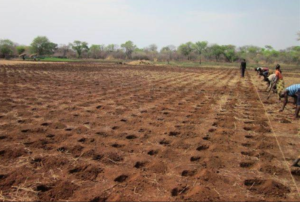 “My people perish for lack of knowledge.” (Hosea 4:6)
“My people perish for lack of knowledge.” (Hosea 4:6)
Part of Sons of Thunder Ministries’ mission statement is to “feed” Africa and that is a bold statement given the size of Africa. But Farming God’s Way is a proven non-till agricultural process that has changed the lives of many thousands and is now the standard practice at the Sons of Thunder Farm in Zambia.
When Sons of Thunder first arrived in the late 1990s one of the first lessons learned was that American farming techniques do not work in southern Africa. Today, Sons of Thunder actually helps fulfill the Great Commission through farming.
Discovered on a commercial farm in Zimbabwe in 1984, Farming God’s Way is a patented four-step farming plan developed and implemented by Brian Oldreive and is now headquartered in South Africa. FGW not only reduces planting costs, but increases harvest yields, and the produce grown is of high standards. Once implemented at Sons of Thunder, where there was once starvation, there is now excess yield that is able to be sold in local markets.
In the photo above you see the meticulous details of planting preparation at the Sons of Thunder Farm. There is an old saying that “you cannot manage well, unless you measure well!” Great care is given to maximizing crop yields within each farm plot and is part of FGW training.
So, what is this patented process all about and why is it called “Farming God’s Way?” And how is it used for evangelism?
The four basic principles are:
- Do Everything on time.
Given the angle of the sun in the southern hemisphere it is critical to plant within a narrow window of time. Soil prep, planting and weeding are all cycles that must be observed.
- Set a high standard.
From a Biblical perspective, God enables us to take the land in a state of chaos and disorder and establish our dominion over the land, so that God’s glory is revealed through the work of our hands. All work must be done with excellence unto the Lord in mind.
- Create minimal waste.
In His amazing wisdom, God designed the earth in such a manner that there are circles to all forms of life and which are interwoven with each other in a delicate balance and without waste. Slash and burn agriculture is practiced all over the world. FGW teaches maximum productivity on smaller tracts of land without threatening indigenous forests, or farmers living in harmony with God’s creation.
- Do everything with a joy and gladness of heart.
Our attitude towards our work is also a component of what we sow. If we sow begrudgingly, we will also reap begrudgingly. In contrast to this if we sow with joy, we will also reap with joy. God delights in our sowing with joy.
“Jesus answered him, ‘It is written, You shall worship the Lord your God, and serve Him only.” (Luke 4:8) The people of Africa have enormous strongholds of witchcraft and ancestral worship. Witchdoctors and shamans are found in almost every village and they are consulted for every event in life including agriculture. There is only one true God and we come to Him through His Son, Jesus Christ. Thus, the first and foremost imperative lesson in Farming God’s Way is teaching the acknowledgement of God and God alone. The gospel of Jesus Christ is the cornerstone of life and Farming God’s Way. Through his shed blood on the cross for our sins we now have eternal life. As we are now adopted into God’s family we are no longer part of the world’s system and its traditions. The Sons of Thunder Farm in Zambia is now one of FGW’s National Training Centers in southern Africa used to educate farmers from Zambia and other neighboring countries. Therefore, it is an evangelical tool that is shared effectively at Sons of Thunder Farm with these training farmers with utmost joy.
Farming God’s Way is redemptive and its concepts taken directly from the Bible. It was sin that brought a curse on the people and the land. Jesus’ death on the cross broke that curse and we must pray and receive redemption through Jesus Christ.
We must rescue the lost land and through Farming God’s Way we use agricultural education as a means to share the gospel of Jesus Christ throughout the world.
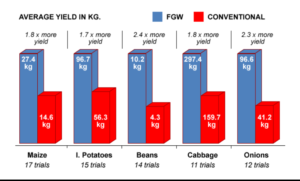 Is it effective?
Is it effective?
Here is a graph showing a recent comparison of results for 69 trials reflecting the difference between Farming God’s Way against high-standard conventional farm plots conducted by Care of Creation Kenya (CCK) since 2012.
Planting has already begun in southern Africa. Please pray that the Lord will continue to bless the Sons of Thunder Farm as we endeavor to spread the gospel of Jesus Christ even through the use of agricultural methods. Would you partner with us in this ministry? Your prayerful financial support would be greatly appreciated.
